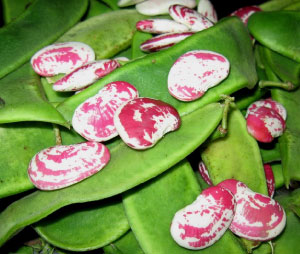
Learning Download: How to Grow Lima Beans
From Seed to Harvest: A beginner’s guide to growing lima beans
Lima beans are also known as butter beans or chad beans. They are similar to green beans and grow in a similar fashion, as well, although it will take loner for them to mature. Baby lima beans, oftentimes seen at the grocery store, are smaller varieties that mature quicker than other varieties. The lima bean flowers will be loose clusters of blooms that are white or yellow. Pods will be curved and flatter than green beans. Lima beans are high in protein and can be used fresh, frozen or dried.
To plant:
There are both bush and pole varieties of lima beans, and the bush varieties will set their pods sooner. Pick which variety is best for you. Then, direct sow the seeds 1 to 2 inches deep and 4 to 6 inches apart. Prewarm the soil with a layer of black plastic or row covers, but if you do not do that, you must wait to plant the beans outside until two or three weeks after the last frost date. If you are planting pole beans, make sure they have adequate support, like a trellis, so they can climb.
For those gardeners who have a shorter growing season, they can start lima beans indoors three weeks before transplanting them outside.
To grow:
Lima beans need full sun to grow, and they prefer soil with a pH between 6 and 6.8. The soil should be rich and well-draining. Clay soil will not work to grow lima beans since they have an expansive root system. When it comes to watering, keep the soil moist until the seeds germinate and then make sure the plants receive at least 1 inch of water per week. Mulch around the base of the plants to keep the roots cool and also retain moisture.

To harvest:
Lima beans are ready to harvest when their pods feel full. This is a drastically different amount of time depending on which variety you plant, as some mature much quicker than others. When the pods feel full, hold the vine and pull the pod off the vine. The pod will not be full like a green bean, but you should be able to feel the beans inside the lima bean pod.
What lima beans crave:
Lima beans are legumes and typically legumes do not need fertilizer. However, the lima bean has a very long growing season so providing them with a side dressing of compost or even a composted manure can go a long way. You also can use one serving of an organic fertilizer in the middle of the season to further the growth along.
Where to buy lima bean seeds:
You can find lima bean seeds at Urban Farmer.
